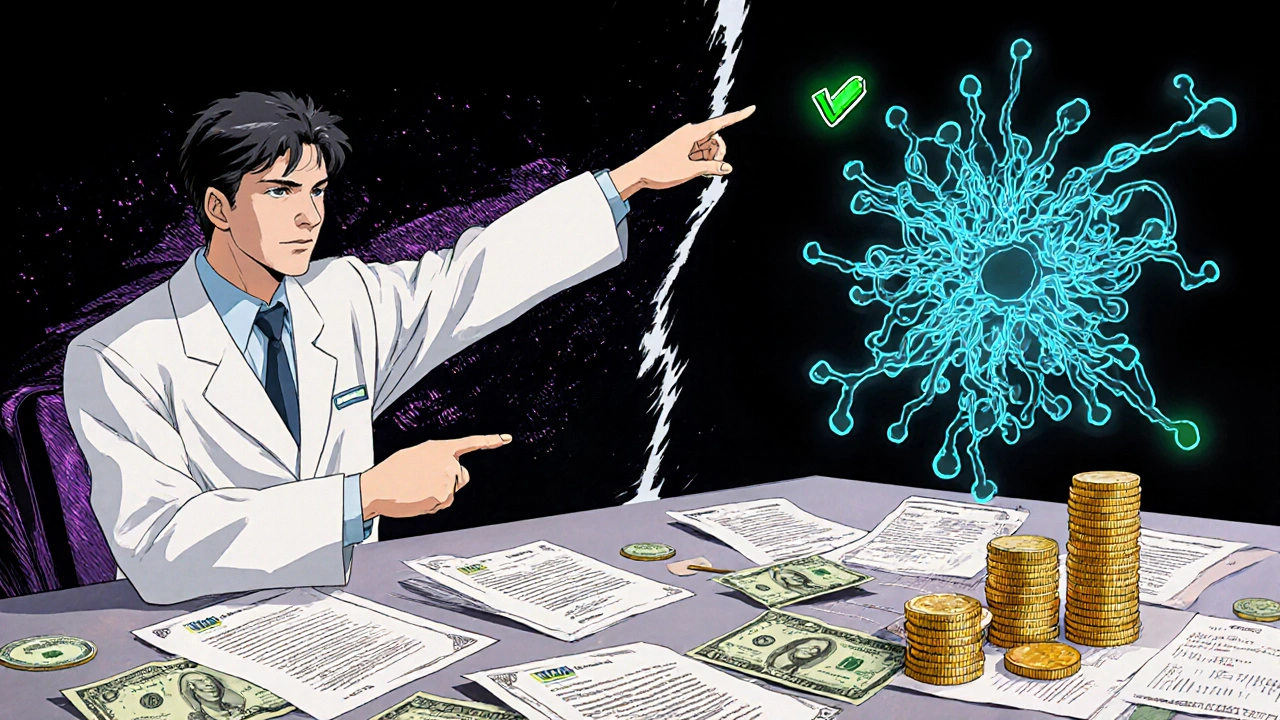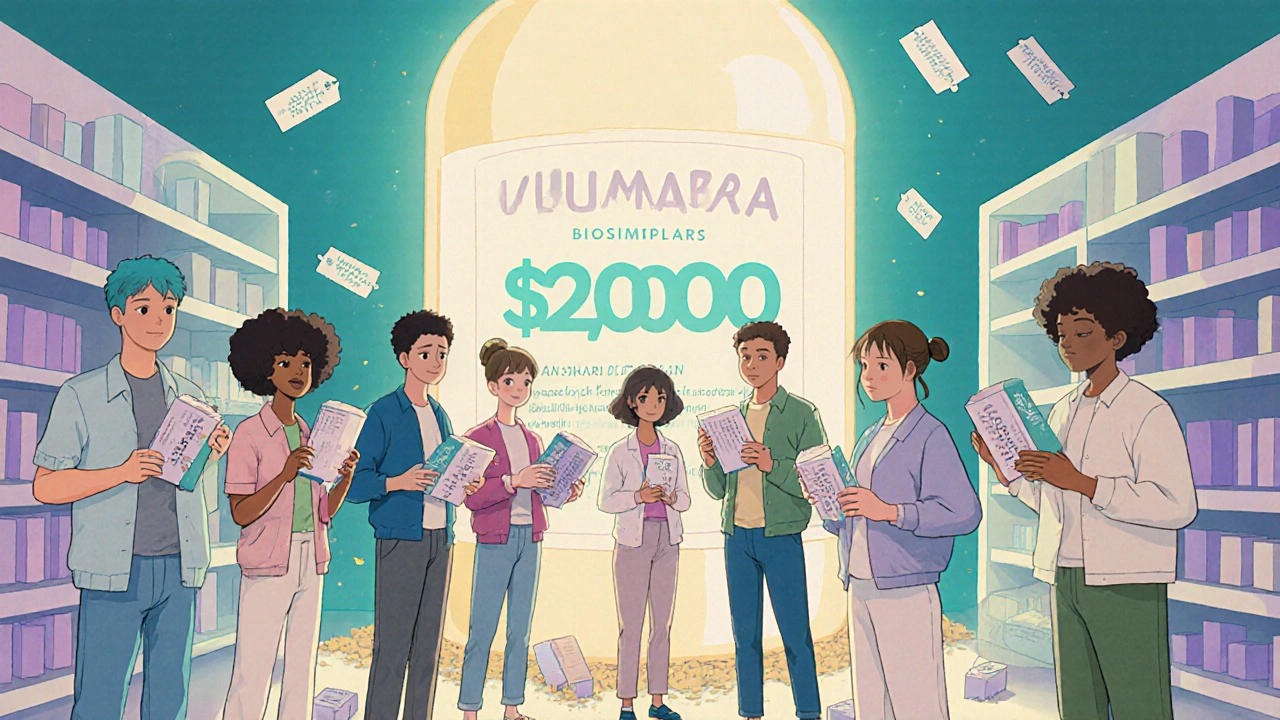Biologic drugs save lives. They treat rheumatoid arthritis, cancer, Crohn’s disease, and other serious conditions. But they also cost ten to twenty times more than regular pills. A single year of Humira, for example, could set you back $20,000 or more. That’s why millions of patients either skip doses, split pills, or go without - not because they don’t need it, but because they can’t afford it.
Enter biosimilars. These aren’t generics. They’re not exact copies like the cheap versions of aspirin or statins. But they’re close enough - so close that the FDA says they work just as safely and effectively as the original biologic. And they’re starting to bring those prices down. Not by 90%, like generics do. But by enough to make a real difference.
Why Biosimilars Cost Less - But Not as Much as Generics
Think of a biologic drug like a living organism. It’s made from cells grown in labs, not chemicals mixed in a vat. That means every batch is slightly different. Replicating it exactly? Impossible. That’s why biosimilars are called “highly similar,” not “identical.”
Creating a biosimilar takes years. You need the same cell line, the same growth conditions, the same purification steps. The FDA requires over 100 tests to prove it behaves the same way in the body. That’s why developing a biosimilar costs $100 million to $250 million - not $5 million like a generic pill.
So, you won’t see an 85% drop in price overnight. But you will see a 35% average savings compared to the original biologic, according to Segal Consulting’s 2025 data. Some cases are even better. When ten biosimilars hit the market for Humira in early 2025, list prices dropped by up to 85%. That’s not a trick - it’s competition working.
The Real Savings: It’s Not Just the Price Tag
Here’s where things get messy. The list price isn’t the price you pay. Pharmacies, insurers, and pharmacy benefit managers (PBMs) negotiate rebates. The original biologic companies often give huge rebates - sometimes 50% or more - to stay on formularies. That makes their net price look competitive, even if the sticker price is sky-high.
Biosimilars don’t have that history. They enter with lower list prices and fewer rebates. That means even if their list price is only 30% lower, their net price can be 50% lower. And because they don’t have to pay back big rebates, they’re cheaper for the system overall.
Here’s what that looks like in practice:
- For Humira biosimilars, average patient out-of-pocket costs dropped 23% in commercial insurance plans (CSRxP, April 2025).
- Employers saved an average of $1.53 million per company when switching employees from Humira to its biosimilars.
- Across all self-insured U.S. employers, switching just two biologics to biosimilars saved $1.4 billion in 2024.
And it’s not just about money. More people are getting treated. Since 2015, biosimilars have enabled over 460 million extra days of therapy - care that wouldn’t have happened without lower costs.
Where the Biggest Savings Are Happening
Not all biologics are equal. Some have dozens of biosimilars competing. Others have none.
Humira (adalimumab) is the poster child. It was the top-selling drug in the world for years. When its patent expired in 2023, ten biosimilars rushed in. By January 2025, list prices were down 85%. That’s not just savings - that’s a market reset.
Stelara (ustekinumab) followed. Nine biosimilars entered by July 2025, with prices as low as 10% of the original list price. Medicare Part B data shows prices kept falling over time - the more competitors, the lower the price.
But here’s the problem: only 12 out of 118 biologics set to lose patent protection over the next decade have biosimilars in development. That means 90% of future biologic drugs - worth an estimated $234 billion in annual spending - could stay locked at high prices.
Compare that to Europe. In Norway, biosimilars make up 86% of the market for some biologics within three years. In the U.S., originator biologics still account for 98.9% of all biologic spending. Why? Because the system isn’t built to favor them.

Why Adoption Is Still So Slow
Doctors, patients, and even insurers are hesitant. Many think biosimilars are “second-rate.” They’re not. Over 3.3 billion patient days have been treated with biosimilars since 2015. No unique safety issues have been found.
But fear sticks. Patients worry about switching. Doctors don’t want to risk a flare-up. Insurers don’t always push them. And PBMs? Some have private-label biosimilars they profit from - so they block others.
There’s also the rebate trap. If a brand-name drug gives a 60% rebate to a PBM, even a biosimilar with a 40% lower list price might not win. The math gets twisted. Only those with deep data tools - like Segal’s SHAPE warehouse - can see the real net cost.
It’s not just about price. It’s about incentives. And right now, the system rewards the status quo.
How to Get More Savings - And Faster
Change is possible. But it needs action.
Employers and health plans can:
- Put biosimilars on the preferred tier - make them the first option.
- Require step therapy: try the biosimilar before approving the brand-name drug.
- Negotiate contracts that reward lower net costs, not just list prices.
- Train doctors and patients with real data: biosimilars are safe, effective, and cheaper.
It takes 6 to 12 months to get these systems running. But once they do, savings pile up. One health system in the Midwest cut its biologic spend by 42% in 18 months by switching to biosimilars for all new patients.
The FDA is helping. It’s speeding up approvals and designating more biosimilars as “interchangeable” - meaning pharmacists can swap them without asking the doctor. That’s a big deal. It cuts red tape and increases access.
The Inflation Reduction Act also gave Medicare new tools to negotiate drug prices. That could push biosimilars further into the spotlight.

What’s Next? The 4 Billion Gap
By 2035, over 100 biologics will lose patent protection. If biosimilars are developed for all of them, the U.S. could save $234 billion over the next decade.
But right now, only 12 are in the pipeline. That’s a 90% gap. The rest? No competition. No price pressure. No savings.
Europe didn’t get to 80% biosimilar use by accident. They had policies that forced change: mandatory substitution, public pricing transparency, and incentives for hospitals to choose cheaper options.
The U.S. is starting to catch up. But slowly. The Biden administration’s 2024 executive order on drug pricing specifically mentioned biosimilars. The FDA is approving more. But without stronger policy - like limiting rebates that block competition or requiring transparency in PBM contracts - the savings will stay locked away.
Patients aren’t asking for miracles. They just want access. A biologic that works. At a price they can afford. Biosimilars deliver that. But only if the system lets them.
Are biosimilars as safe as the original biologics?
Yes. The FDA requires biosimilars to show no clinically meaningful differences in safety, purity, or effectiveness compared to the original. Over 3.3 billion patient days have been treated with biosimilars since 2015, with no unique safety concerns identified in any major study.
Why don’t biosimilars save as much as generics?
Generics are simple chemical copies - easy and cheap to make. Biosimilars are complex proteins made from living cells. Replicating them requires years of research, expensive facilities, and hundreds of tests. That drives up development costs, so savings are more modest - typically 15% to 35% - but still significant.
Can I switch from a biologic to a biosimilar?
Yes, if your doctor agrees and the biosimilar is designated as “interchangeable” by the FDA. Most new patients start on biosimilars. For those already on the original biologic, switching is common and safe - especially for conditions like rheumatoid arthritis or Crohn’s disease. Studies show no increased risk of flare-ups or side effects after switching.
Why are biosimilars still so hard to get in the U.S.?
The main reason is the rebate system. Brand-name drug makers pay huge rebates to pharmacy benefit managers (PBMs) to stay on insurance formularies. Even if a biosimilar has a lower list price, the rebate can make the original look cheaper on paper. Also, many doctors and patients still have misconceptions about biosimilar safety, and some PBMs favor their own private-label biosimilars over others.
How much have biosimilars saved the U.S. healthcare system?
Since 2015, biosimilars have saved the U.S. healthcare system $56.2 billion. In 2024 alone, they saved $20.2 billion. Combined with generics, biosimilars helped save $467 billion in prescription drug costs last year.
Will biosimilar prices keep falling?
Yes - when there’s competition. The more biosimilars that enter the market, the lower prices go. For example, when a second biosimilar for a drug enters within three years of the first, average prices drop nearly twice as fast. That’s why the lack of biosimilar development for 90% of upcoming biologics is such a big concern.
Final Thought: It’s Not About Cheaper - It’s About Access
Biosimilars aren’t magic. They won’t fix the entire drug pricing system. But they’re one of the most proven tools we have right now to bring down the cost of life-changing medicines.
Every dollar saved on a biologic is a dollar that can go to another patient. To a new cancer drug. To mental health care. To insulin.
The question isn’t whether biosimilars work. They do. The question is whether we’ll let them reach the people who need them - or keep letting the system block them with rebates, confusion, and inertia.

Richard Wöhrl
November 23, 2025 AT 02:46Let me be clear: biosimilars aren’t just ‘cheaper versions’-they’re scientific triumphs. The FDA’s 100+ tests aren’t a formality; they’re a forensic audit of biological function. And yet, we still treat them like second-class medicine. Over 3.3 billion patient-days? No increased adverse events? That’s not anecdotal-that’s statistically ironclad. The real scandal isn’t the price tag-it’s the inertia of fear, fueled by PBMs who profit from opacity. We’re not saving money-we’re rationing care by proxy.
Brandy Walley
November 24, 2025 AT 09:24shreyas yashas
November 25, 2025 AT 17:52in india we dont even get the original biologics half the time. biosimilars? they’re the only reason my cousin with RA can walk again. yes, they’re made here-cheaper, yes-but not worse. the real issue? doctors who dont trust them. we need training, not just marketing. if you’ve seen someone go from wheelchair to grocery shopping because of a $300/month biosimilar instead of $20k… you dont argue. you just thank god.
Suresh Ramaiyan
November 26, 2025 AT 15:37There’s something deeply human here. We’re not just talking about drug pricing-we’re talking about dignity. A person who can’t afford Humira isn’t just ‘costing the system’-they’re sacrificing their life, one missed dose at a time. Biosimilars don’t just lower numbers on a spreadsheet. They restore sleep, jobs, family dinners. And yet, the system rewards complexity over compassion. It’s not a market failure. It’s a moral one. We’ve built an economy that profits from suffering-and we call it ‘innovation’.
Lisa Lee
November 27, 2025 AT 14:38U.S. healthcare is a mess, but this is why we can’t have nice things. Europe’s got 86% biosimilar adoption? Yeah, because they’ve got socialized medicine. We don’t. Here, if you want your life saved, you pay. Or you die. No one’s coming to fix your insulin. Stop romanticizing foreign systems. We’re not Norway. And we never will be.
Kezia Katherine Lewis
November 29, 2025 AT 13:52From a pharmacoeconomic standpoint, the rebate architecture creates a perverse incentive structure wherein net price elasticity is obfuscated by formulary gatekeeping. The PBM vertical integration model effectively suppresses competitive entry, even when biosimilars demonstrate non-inferiority per FDA standards. The lack of transparency in rebate retention-particularly with private-label biosimilars-constitutes a market distortion that violates the principles of value-based purchasing. Until we decouple reimbursement from rebate manipulation, we’re merely rearranging deck chairs on the Titanic.
Dalton Adams
November 30, 2025 AT 10:16You’re all missing the point. Biosimilars are only 35% cheaper? Pathetic. Real generics are 90% cheaper. This isn’t innovation-it’s pharmaceutical theater. And don’t get me started on the ‘interchangeable’ label-FDA’s criteria are laughably lax. I’ve reviewed the analytical data. There are still glycosylation profile variances >15% between biosimilars and originators. You think that’s clinically meaningless? LOL. 😏 Only a naive patient or a PBM lobbyist buys that. And don’t even mention ‘460 million extra therapy days’-that’s just marketing fluff. Where’s the RCT data? Where’s the long-term immunogenicity study? I’ve seen the redacted documents. This is a money grab dressed up as progress.
Casper van Hoof
December 1, 2025 AT 00:13There is an elegant irony in the resistance to biosimilars: we accept that a car’s engine can be reverse-engineered, a smartphone’s firmware cloned, a software algorithm replicated-but a protein folded by a living cell? That, apparently, is too sacred to replicate. The biologics industry clings to the mystique of biological uniqueness, yet the science says otherwise. The real barrier isn’t science-it’s narrative. We’ve been conditioned to believe that ‘original’ equals ‘better.’ But when the original costs twenty thousand dollars and the copy saves a life at fifteen hundred, the moral calculus becomes unavoidable. We are not debating pharmacology. We are debating whether human dignity is negotiable.